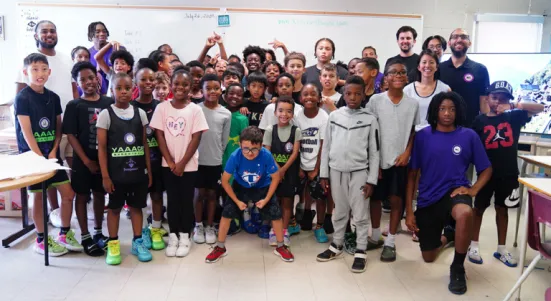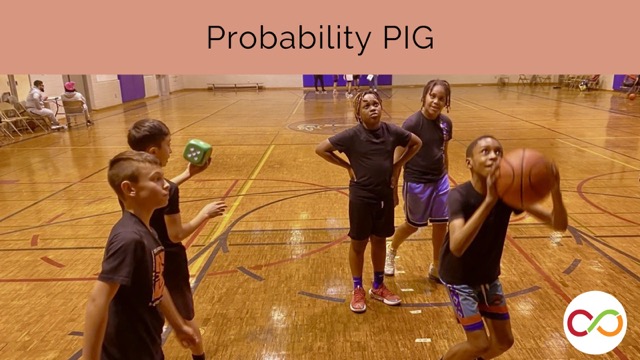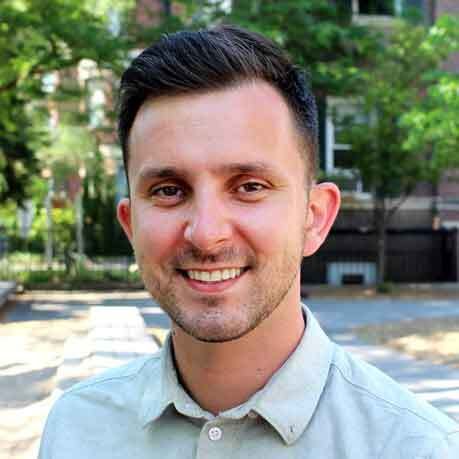Approaching Math Through Basketball: A Robertson Program collaboration with YAAACE

This year, The Robertson Program teamed up with the Youth Association for Academics, Athletics, and Character Education (YAAACE) for an innovative, exploratory initiative: Approaching Math Through Basketball. Following the success of our collaboration during their 2023 summer camp, we set our sights on a fresh objective: developing a series of engaging activities aimed at fostering a deeper understanding of probability and statistics among members of YAAACE’s fifth-grade competitive basketball team.
At the heart of our approach lies a fundamental truth: Young learners thrive when learning emerges from their passions and interests (Wang & Eccles, 2012). YAAACE’s basketball program engages youth who demonstrate an unwavering dedication to their favourite sport, investing countless hours each week to develop their basketball skills. YAAACE also fosters the personal development of its youth off the court through various academic programs. The Robertson Program’s dedication to providing engaging, evidence-based learning experiences for children in Ontario made us a perfect match for this partnership, in line with YAAACE’s mission of providing culturally reflective programs that address the educational disparities in racialized and underprivileged communities.
“By making math more fun through inquiry, relevant to everyday circumstances such as playing basketball, and culturally responsive in pedagogy, we seek to mitigate the underachievement and lack of representation of Black students in the STEM field,” says YAAACE Executive Director Dr. Ardavan Eizadirad.
Research has revealed a disconnect between the mathematics children are able to perform outside of school (context-dependent mathematics) and mathematics learning in school-based settings. A study of youth basketball players found that, although the players could solve data literacy problems within the context of basketball, they would struggle to answer comparable problems in math class (Nasir, 2000). In our project, we had children estimate and calculate their own free throw percentages, offering opportunity to not only develop knowledge and practice in calculating percentages, but also as a way of experiencing and appreciating the relevance of mathematics.
“Statistics such as free throw percentage, field goal percentage, and average assists per game lend themselves beautifully to mathematical discussions and explorations of these concepts,” says Dr. Zack Hawes, director of the Mathematical Thinking Lab at OISE and a partner in the Approaching Math Through Basketball project. “Then there’s concepts and principles such as the law of large numbers, the gambler’s fallacy, and theoretical vs. experimental probability that also permeate the game of basketball. For example, is there such a thing as a hot streak?”
References
Nasir, N. S. (2000). Points ain’t everything: Emergent goals and average basketball in a below-average math class. Anthropology & Education Quarterly, 31(3), 295-323.
Wang, Z., Shakeshaft, N., Schofield, K., & Malanchini, M. (2018). Anxiety is not enough to drive me away: A latent profile analysis on math anxiety and math motivation. PloS one, 13(2), e0192072.



